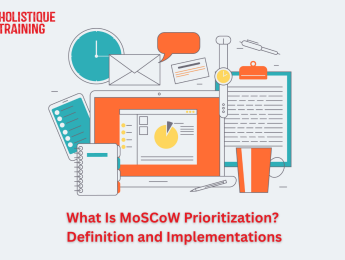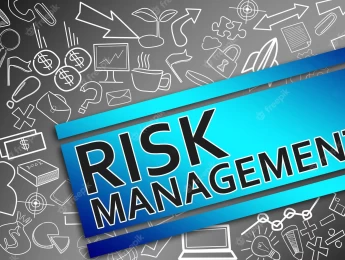- Table of Contents
- What Is Corporate Identity?
- What Are the 3 Key Elements of Corporate Identity?
- 1- Corporate Culture
- 2- Visual Identity
- 3- Brand Voice and Messaging
- Why Is Corporate Identity Important?
- Differentiation in a Crowded Market
- Building Trust and Credibility
- Attracting and Retaining Talent
- Guiding Decision-Making
- Consistency in Brand Experience
- Long-Term Brand Loyalty
- Corporate Identity vs. Brand Identity
- Corporate Identity
- Brand Identity
- What Role Does Corporate Identity Play in Your Brand’s Story?
- Setting the Stage
- Defining the Protagonist
- Creating a Visual Language
- Crafting the Dialogue
- Fostering Emotional Connections
- Consistency in Storytelling
- Steps to Build a Corporate Identity
- 1. Define Your Core Values
- 2. Cultivate Your Corporate Culture
- 3. Craft a Unique Visual Identity
- 4. Develop a Consistent Brand Voice
- 5. Train Your Team
- 6. Communicate Your Identity
- 7. Monitor and Evolve
- Conclusion
Imagine walking into a room filled with people. Each person is dressed uniquely, exuding an aura that conveys a specific personality and attitude. Some are friendly and approachable, while others seem reserved and formal. You can instantly form impressions about these individuals based on their appearance and demeanour. In the business world, this concept translates into something known as corporate brand identity—a vital aspect that can significantly influence how a company is perceived. In this extensive guide, we'll delve deep into the realm of corporate brand identity, exploring its definition, elements, significance, and how it intertwines with your brand's narrative. Plus, we'll outline concrete steps to help you build a robust corporate identity for your business.
What Is Corporate Identity?
Corporate identity is the essence of your business—its unique personality, values, and visual elements that distinguish it from others in the market. It's the totality of how your company presents itself to the world, encompassing everything from the way it communicates with customers to its visual design elements.
At its core, corporate identity embodies the company's DNA—the foundational principles and beliefs that drive its existence. This identity acts as the North Star guiding all aspects of your business, from how employees interact with customers to the design of your marketing materials.
What Are the 3 Key Elements of Corporate Identity?
To understand corporate identity fully, we must break it down into its three key components:
1- Corporate Culture
Corporate culture is not merely a buzzword; it is the life force that permeates through every aspect of your organisation. It encapsulates the shared values, beliefs, and behaviours of your employees, shaping the very fabric of how your team collaborates, engages with customers, and confronts challenges. The significance of a robust corporate culture extends beyond internal dynamics; it acts as a magnetic force, attracting and retaining top-tier talent aligned with your organisational ethos.
In cultivating a thriving corporate culture, consider initiatives that encourage employees to embody these values daily. This isn't just about posters on the walls; it's about fostering an environment where your culture is lived and breathed by every member of your team. A strong corporate culture isn't only an internal compass; it's an external statement that resonates with your audience, fostering trust and loyalty.
2- Visual Identity
Your brand's visual identity is the face it presents to the world, and crafting it meticulously is paramount. This includes the design elements that are often the first point of contact for your audience: the logo, colour palette, typography, and other visual cues. Statistics also show that visual elements account for 55% of the initial impressions a brand makes, which shows how important they are.
Collaboration with skilled designers is essential to create a cohesive and memorable visual identity. A distinctive logo becomes a symbol synonymous with your brand, while a carefully chosen colour palette and typography contribute to conveying your brand's personality. The goal here is not just recognition but resonance—your visual identity should communicate your values and differentiate your brand in a crowded marketplace.
3- Brand Voice and Messaging
How your brand communicates is as crucial as how it looks. Brand voice and messaging encapsulate the words and tone used across all channels, from websites to customer interactions. Consistency is the linchpin here; a unified voice ensures that your brand's personality, values, and mission are communicated cohesively.
Define your brand's voice and messaging guidelines, outlining the tone you want to convey. Whether it's a friendly and casual demeanour or a more formal and authoritative approach, maintaining this consistency is key to building a brand that is not just recognised but trusted. Your brand's story is conveyed through its dialogue, and a well-defined brand voice ensures this narrative is clear, compelling, and resonates with your target audience.
Why Is Corporate Identity Important?
The importance of corporate identity in today's competitive business landscape cannot be overstated. It serves as the cornerstone upon which businesses build their brand presence, establish credibility, and foster enduring relationships with both customers and employees. Let's delve into the compelling reasons why corporate identity matters:
Differentiation in a Crowded Market
In the ocean of products and services, standing out is not a luxury but a necessity. A distinctive corporate identity acts as a beacon, guiding potential customers through the noise of competitors. It ensures that your business is not just another option but a unique proposition that captures attention and lingers in the minds of consumers. In a market saturated with choices, differentiation becomes a key driver of success, and a well-defined corporate identity is your passport to achieving it.
Building Trust and Credibility
Perception is reality in the business world, and a well-defined corporate identity cultivates a positive perception. When customers perceive your brand as consistent, reliable, and true to its values, trust naturally follows. A strong corporate identity acts as a testament to your professionalism, signalling to customers that yours is a brand they can rely on. In an era where trust is a precious commodity, a robust corporate identity becomes the currency that buys consumer confidence.
Attracting and Retaining Talent
Top-tier talent seeks more than just a job; they seek a workplace aligned with their values and aspirations. A compelling corporate identity isn't just a tool for customer attraction; it's equally instrumental in attracting the right talent. A well-defined culture, values, and a clear mission statement serve as a magnetic force for individuals who resonate with your organisation's ethos. Beyond attracting talent, it contributes to employee retention by fostering a sense of belonging and purpose.
Guiding Decision-Making
In the ever-evolving landscape of business decisions, a clear corporate identity acts as a reliable compass. Whether faced with choices related to marketing strategies, customer service approaches, or internal cultural decisions, having a well-defined corporate identity provides a reference point. It ensures that decisions align with the brand's essence, contributing to a cohesive and harmonious operation. It's not merely a set of guidelines; it's a strategic tool that aids in navigating the complex terrain of decision-making.
Consistency in Brand Experience
Consistency breeds familiarity, and familiarity breeds trust. And, statistics show that for a whopping 81% of consumers, brand trust is a prerequisite for considering a purchase. A strong corporate identity ensures a consistent brand experience across all touchpoints. From the website design to customer service interactions, the identity should resonate seamlessly. This consistency not only reinforces brand recognition but also contributes to a positive and predictable experience for customers. It's the thread that weaves together every interaction, creating a tapestry of trust and reliability.
Long-Term Brand Loyalty
Customers don't just buy products; they invest in brands that align with their values. A well-crafted corporate identity establishes an emotional connection with your audience. It goes beyond transactional relationships, fostering brand loyalty that withstands market fluctuations and competitive pressures. When customers feel a personal connection with your brand's identity, they are more likely to become advocates, ensuring sustainable success in the long run.
In essence, corporate identity is not a superficial embellishment; it's the backbone of a successful business strategy. It weaves together the threads of differentiation, trust, talent attraction, and long-term loyalty, creating a tapestry that defines the very fabric of your brand. In a landscape where consumer choices are abundant and attention spans fleeting, a compelling corporate identity becomes the North Star that guides your brand through the complexities of the market. It's not just a matter of aesthetics or rhetoric; it's a strategic imperative that propels your business towards sustained success and relevance.
Corporate Identity vs. Brand Identity
Before we move forward, it's essential to clarify the distinction between corporate identity and brand identity. While these terms are often used interchangeably, they have distinct roles:
Corporate Identity
As mentioned earlier, corporate identity encompasses the foundational aspects of your business, including culture, visual elements, and messaging. It's the internal compass that guides how your business operates.
Table 1: Key Differences Between Corporate Identity and Brand Identity
Aspect | Corporate Identity | Brand Identity |
Definition | Essence, values, and presentation to the world. | Outward-facing elements and visual expression. |
Focus | Internal compass guiding business operations. | External presentation seen by customers. |
Components | Culture, visual elements, and messaging. | Logo, colour scheme, and messaging style. |
Scope | Big picture guiding how business operates. | Visual and communicative expression of the big picture. |
Role | Shapes the brand's story and guides decision-making. | Visible and interactive elements seen by customers. |
Brand Identity
Brand identity is a subset of corporate identity. It focuses primarily on the outward-facing elements of your brand, such as logo, colour scheme, and messaging style. Brand identity is what customers see and interact with.
In essence, corporate identity is the big picture, while brand identity is the visual and communicative expression of that big picture.
What Role Does Corporate Identity Play in Your Brand’s Story?
Corporate identity plays a significant role in shaping and telling your brand's story. Think of your brand's story as a narrative that customers can connect with on a personal level. Here's how corporate identity contributes to this story:
Setting the Stage
Your corporate culture is the foundational backdrop against which your brand's story unfolds. It's not merely a set of principles; it's the guiding force that defines the values and ethos driving your business. The narrative begins with the establishment of this cultural stage, providing context to your brand's journey. A strong corporate culture sets the tone, allowing customers to understand the principles that propel your brand forward and shape its unique identity.
Defining the Protagonist
In your brand's story, your employees are the characters, and corporate identity helps define their roles. It sets expectations for how these characters (employees) should interact with customers and each other. A well-defined corporate identity ensures that every employee understands their part in the narrative—how they contribute to the overarching story of the brand. This alignment creates consistency in customer interactions and reinforces the brand's character.
Creating a Visual Language
The visual elements of your corporate identity—logo, colours, and design—serve as the visual language of your brand's story. They provide a consistent and recognisable backdrop against which the narrative unfolds. A meticulously crafted logo becomes a symbol that encapsulates the essence of your brand, while colours and design elements contribute to the aesthetic tone of your story. This visual language becomes the shorthand through which customers identify and remember your brand's narrative.
Crafting the Dialogue
Your brand voice and messaging are the words spoken by your brand in its story. These elements convey the personality, values, and mission of your brand. A well-defined brand voice ensures that the language used across all channels—from websites and social media to customer interactions—is consistent. This consistency in communication creates a cohesive dialogue that allows customers to connect emotionally with your narrative. It's not just about what your brand says; it's about how it says it.
Fostering Emotional Connections
At the heart of every compelling story is an emotional connection. Corporate identity serves as the vehicle through which this emotional resonance is achieved. When customers can see a clear alignment between your brand's values and their own, an emotional bond is forged. This connection transcends the transactional, creating a sense of loyalty and advocacy. A strong corporate identity ensures that every touchpoint with your brand is an opportunity to reinforce these emotional connections.
Consistency in Storytelling
Consistency is the glue that holds your brand's narrative together. A cohesive corporate identity ensures that every aspect of your brand—from internal operations to external communication—tells the same story. This consistency fosters trust and reliability, crucial elements in creating a narrative that customers can rely on. Inconsistencies in the narrative can lead to confusion and dilute the impact of your brand's story.
In essence, corporate identity is the master storyteller that weaves together the threads of culture, visual elements, and messaging, creating a rich tapestry that defines your brand's narrative. It's not just a set of guidelines; it's the narrative script that guides your brand through its journey. By carefully curating these elements, your brand can tell a story that resonates, connects, and endures in the hearts and minds of your audience. In a world inundated with information, a compelling brand story, guided by a well-defined corporate identity, becomes the beacon that guides customers to your brand's unique narrative.
Steps to Build a Corporate Identity
Now that we've explored the importance of corporate identity and its role in your brand's story, let's dive into the practical steps to build a robust corporate identity for your business:
1. Define Your Core Values
Your core values are the bedrock upon which your corporate identity is built. Start by identifying the fundamental principles and beliefs that drive your business. What does your organisation stand for? What are the non-negotiable values that guide decision-making? These values serve as the foundation of your corporate identity, influencing how your brand is perceived and how it interacts with both internal and external stakeholders.
2. Cultivate Your Corporate Culture
Translate your core values into a tangible and lived experience through a strong corporate culture. Encourage employees to embody these values in their daily work. This involves fostering an environment that reflects and reinforces the identified values. A vibrant corporate culture not only influences internal behaviour but also becomes a powerful magnet for talent that resonates with the ethos of your organisation.
3. Craft a Unique Visual Identity
Visual elements are the face of your brand, and crafting a distinctive visual identity is crucial. Work closely with designers to create a cohesive visual language for your brand. This includes designing a unique logo that encapsulates your brand's essence, selecting a colour palette that reflects its personality, and choosing typography that complements your style. A well-crafted visual identity not only enhances brand recognition but also communicates your brand's character and values.
4. Develop a Consistent Brand Voice
Define your brand's voice and messaging guidelines. Determine the tone you want to convey in your communications, whether it's friendly and casual, formal and authoritative, or somewhere in between. Consistency in your brand's voice across all channels, from your website and social media to customer interactions, is paramount. This consistency reinforces your brand's personality and values, contributing to a cohesive and memorable brand experience. Statistics also show that maintaining a uniform brand image across various platforms may lead to a revenue increase of up to 23%.
5. Train Your Team
Ensure that every member of your team understands and embraces your corporate identity. Provide training on how to communicate with customers, both verbally and in writing. This includes imparting the nuances of your brand's voice, ensuring that every interaction aligns with the established identity. When your team becomes ambassadors of your brand's identity, it strengthens the overall brand image and builds trust with customers.
6. Communicate Your Identity
Integrate your corporate identity into every facet of your business. From your website and marketing materials to customer service interactions, your identity should be evident and consistent. Ensure that your visual elements, messaging, and overall brand personality are seamlessly woven into every customer touchpoint. Consistent communication reinforces your brand identity and contributes to a memorable and unified brand experience.
7. Monitor and Evolve
Recognise that corporate identity is not a static entity; it evolves with your business. Regularly monitor how well your identity aligns with your brand's goals and make adjustments as needed. Keep a finger on the pulse of your market, staying attuned to shifts in customer preferences and industry trends. This adaptability ensures that your corporate identity remains relevant and resonant as your business grows and faces new challenges.
In summary, building a corporate identity is a strategic endeavour that requires a holistic approach. By defining core values, cultivating a strong corporate culture, crafting a unique visual identity, developing a consistent brand voice, training your team, and integrating your identity into every aspect of your business, you create a cohesive brand identity that leaves a lasting impression on your audience. This identity isn't just a set of guidelines; it's a dynamic force that shapes your brand's narrative, fosters emotional connections, and positions your business for success in a competitive market. Through continuous monitoring and adaptation, your corporate identity becomes a living entity, evolving with your brand and ensuring a lasting impact on your audience.
Conclusion
Corporate identity is the soul of your business, encompassing its culture, visual identity, and messaging. It plays a pivotal role in shaping how your brand is perceived and contributes significantly to your brand's narrative. By following the steps outlined in this guide, you can build a strong corporate identity that not only sets you apart in a competitive market but also resonates with customers on a deeper level. Remember, your corporate identity isn't just what you say about your brand; it's what your brand says about you through its actions and presentation.
If you're looking to master the art of corporate identity and brand management, then you need to check out our course, ‘Brand Management & Corporate Identity,’ where you can deepen your understanding and gain practical skills to build and nurture a powerful corporate identity for your business. Your brand's success story begins with a solid identity, and our course can be your guide on this exciting journey. Enrol now!
























